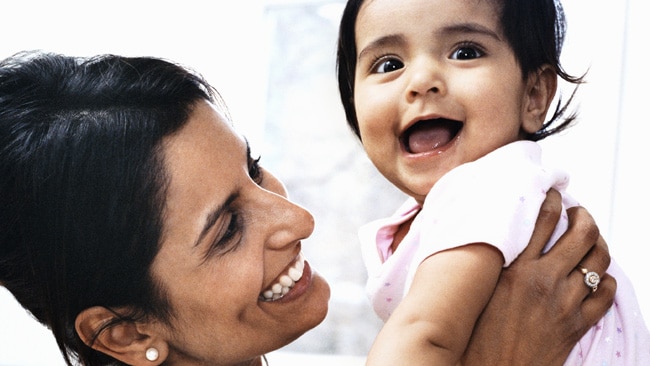Study finds more stillbirths among South Asian women
WOMEN who give birth in Australia but were born in countries like India have almost double the rate of stillbirths compared to locally-born women.

WOMEN born in South Asian countries including India and Pakistan who give birth in Australia have almost double the rate of stillbirths compared to locally-born women, research shows.
The reasons behind the disparity, which is reflected in similar studies overseas, is baffling doctors because normal risk factors for stillbirth did not explain the higher rates.
A study carried out at three Melbourne public hospitals between 2001 and 2011 found women from India, Pakistan, Sri Lanka and Bangladesh had a stillbirth rate 2.4 times higher than Australian-born women and 3.4 times greater than women born in East and South East Asia.
 Kidspot: Miscarriage and stillbirth advice
Kidspot: Miscarriage and stillbirth advice
In total, there were 75 stillbirths from 44,326 single births over the 10 year period, Southern Health and Monash University researchers found.
Of 28,380 births to Australian-born women, 42 infants were stillborn, compared to 23 of 6471 births to South Asian born women.
Recent studies from the UK and the Netherlands showed South Asian women had an 80 per cent higher risk of stillbirth than white women.
"These results support observations in other Western populations that women of South Asian origin have a higher risk of stillbirth than other women," said the authors, including Monash University Professor Euan Wallace.
"However, the reasons for this difference remain obscure."
One key difference was the low birthweight of babies born to women from South Asia, which was nearly twice the rate of other women.
The risk of stillbirth in South Asian women increased as gestation progressed between 37 and 41 weeks, when there was an almost fivefold increase.
Prof Wallace, Southern Health's director of obstetric services, said it may be time to consider intervening to induce pregnancy earlier in this group of women.
"There's a clock that sets at the very beginning of the pregnancy, a bit like setting a timer to boil your egg, that goes off at the end of the pregnancy and then labour starts," Prof Wallace told AAP.
He said researchers were beginning to question whether the clock varied in different women.
"Do South Asian women have a different clock and instead of 40-weeks being full term for them, should we be saying that 38 weeks is full term?"
Prof Wallace said hormone markers associated with the clock could potentially be measured in women of different ethnicity to determine whether their hormone profiles varied.
If the profiles were different, the next step would be to undertake a clinical trial investigating whether inducing labour in these women was associated with better outcomes for both mother and baby.
There was no significant differences in the study between Australian-born women and those from East and South East Asian countries like Japan, China, the Philippines, Thailand and Vietnam.
About half the women giving birth at Southern Health during the study were born overseas.



